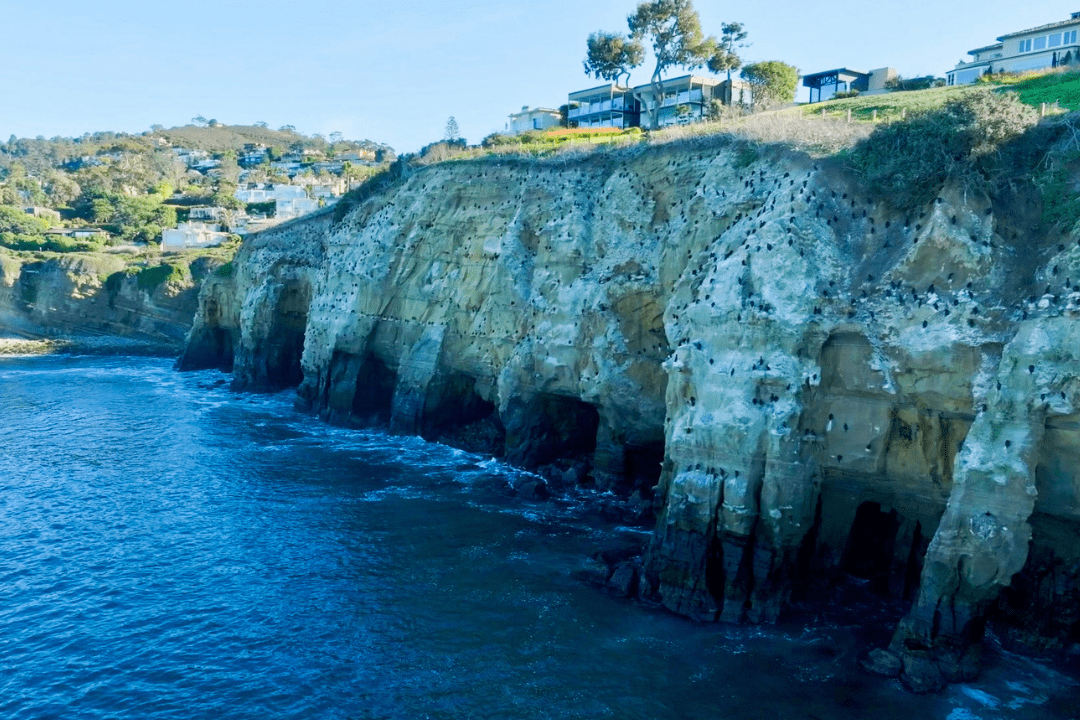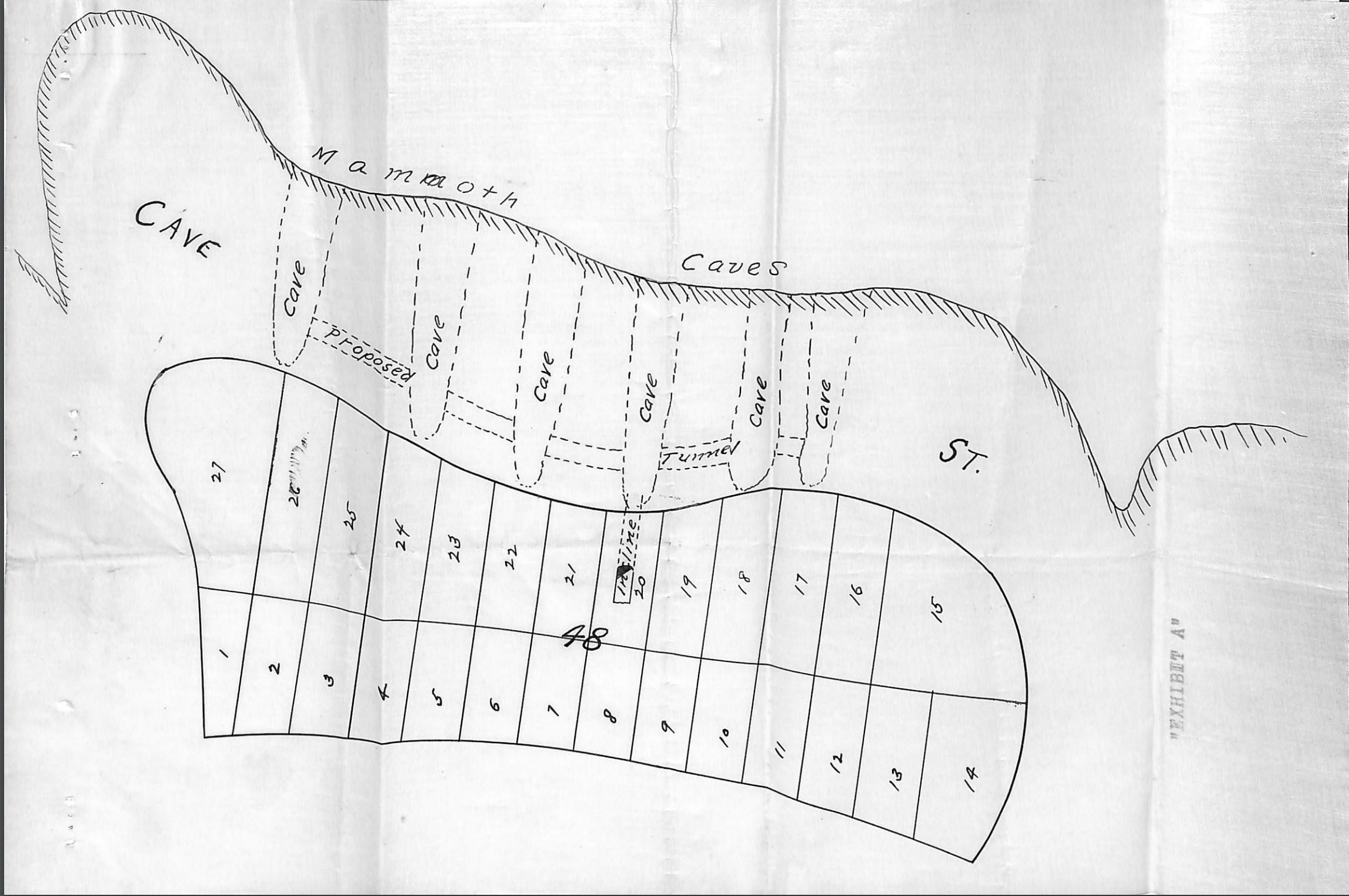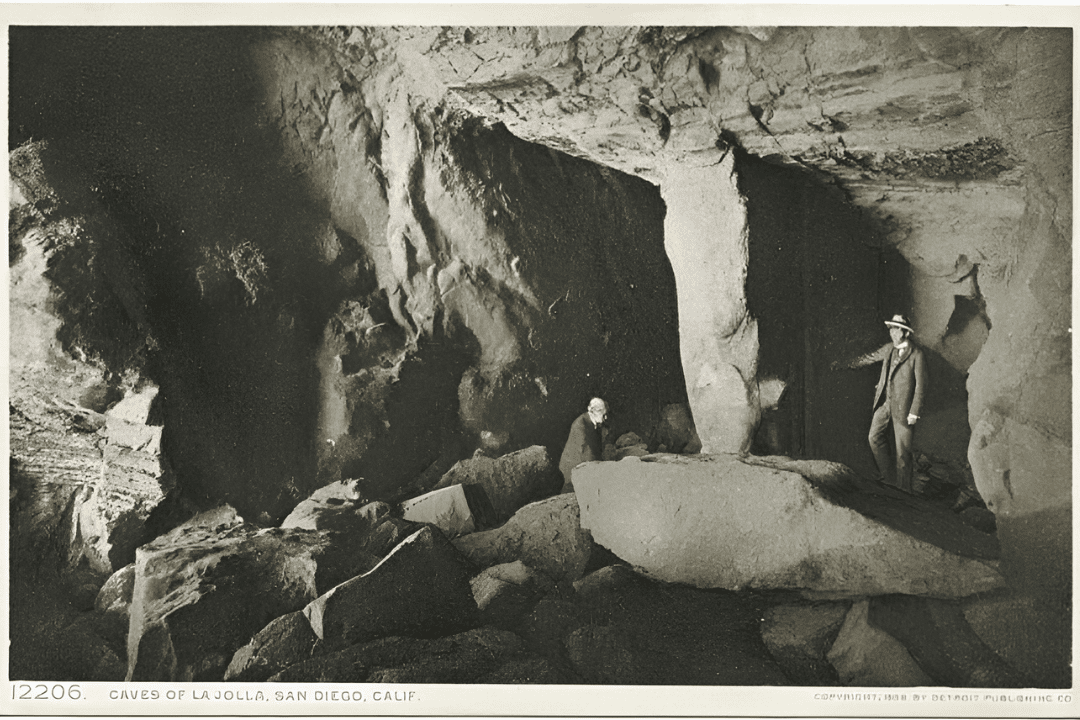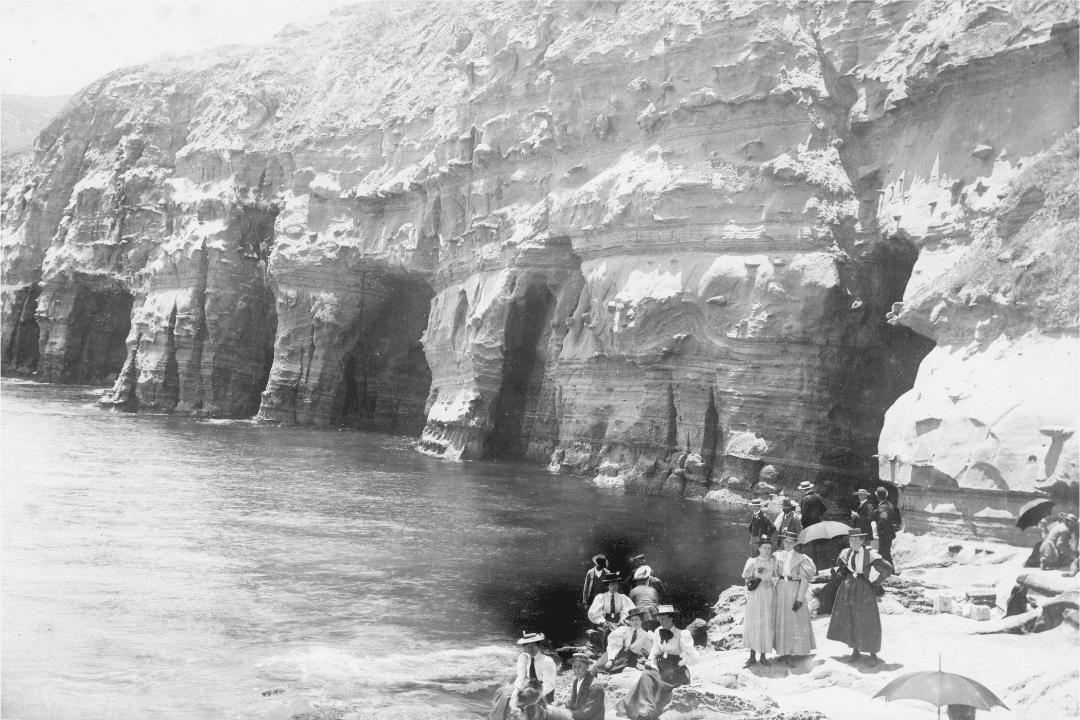Hidden histories reveal the turbulent tale of La Jolla’s sea caves and the tunnel feud of 1902.

You may know about La Jolla’s Sunny Jim’s Cave, the destination reachable through The Cave Store. You may even know the cave is part of a network of seven caves the waves carved into the sandstone cliffs, most of which can only be accessed during extremely low tides and rarely by foot.
A little-known story lies in an antique recording of a physical fight between the men attempting to tunnel into the sea caves:
The seven sea caves, the openings of which face north towards Scripps Pier, were the subject of a 1902 petition to the Common Council of the city of San Diego by Thomas Diamond, who owned property on Cave Street above the caves.
Diamond requested council permission to connect the caves, then called “Mammoth Caves,” via a continuous series of tunnels “so that said caves may be entered at any time” from his La Jolla property.

Diamond’s proposal also included his request for authorization to collect admission from each person accessing the tunnel.
A week later, La Jolla residents filed a petition against Diamond’s request, under the belief the tunnels “would be a danger to the street running in front of [adjacent properties] and that they would shorten the life of the caves.”
The dozens of signatures on the opposing petition include that of Ellen Browning Scripps, famed La Jolla benefactress.
The challengers also organized a protest for the scheduled City Council meeting, according to the San Diego Evening Tribune.
The City Council denied Diamond his request.
The same year, Gustav Schultz, an artist, mining engineer and entrepreneur, dug out a similar tunnel from his property at the north end of Cave Street.
Schultz’s tunnel led from his residence – which became the still-operating Cave Store – into Sunny Jim’s sea cave.

On Dec 18, 1902, the San Diego Union reported “there was a little difficulty between Thomas Diamond and Prof. Gustav Schultz … which resulted in the arrest of Diamond on the charge of battery on the professor.”
It’s unclear what precipitated the fight between the two men.
In September 1903, a petition filed with the city by La Jolla residents and property owners requested that Schultz be allowed to maintain his tunnel, asserting the passageway “renders the cave safely and easily accessible to any state of the tides” and that the tunnel “has given great pleasure to tourists and visitors and has been one of the [principal] attractions” in La Jolla.
The tunnel remains a La Jolla landmark today, with tours running daily allowing visitors to descend and climb back up the original 144 stairs into the cave.
About the seven sea caves
White Lady: The easternmost cave is White Lady, said to have been named for a new wife searching for seashells on her honeymoon when she was swept away by the tide.
Little Sister: Moving west, the Little Sister cave is next, so named for its resemblance to the shape of White Lady. It’s the smallest of the seven sea caves.
Shopping Cart: Next is Shopping Cart, which faces due west and used to be known as a hotspot for spiny lobster trapping, no longer permitted due to its being within a Marine Protected Area.
Sea Surprize: The next west cave is Sea Surprize, which often surprises visitors as its small appearance belies a wider passage inside with many other surprises to be seen.
Arch: Also called Arches, Arch cave is the second deepest state in California, and the most extensive in La Jolla at about 680 feet deep.
Sunny Jim’s: The next cave is Sunny Jim’s, the most accessible and well-known of them all. The only one of the seven sea caves accessible by both land and water, Sunny Jim’s was once the conduit for whiskey smuggling during prohibition.
Clam: The westernmost cave is Clam, which has a double-sided entrance.
Visiting the La Jolla caves
To visit Sunny Jim’s cave, head to The Cave Store and descend the stairs, or hit the water: all the caves can be viewed from the ocean by kayak or swimming.
To ensure safety, try a kayak or snorkeling cave tour with companies like Everyday California or La Jolla Kayak.
During extreme low tides, the caves can also be accessed by walking the beach south from La Jolla Shores.









